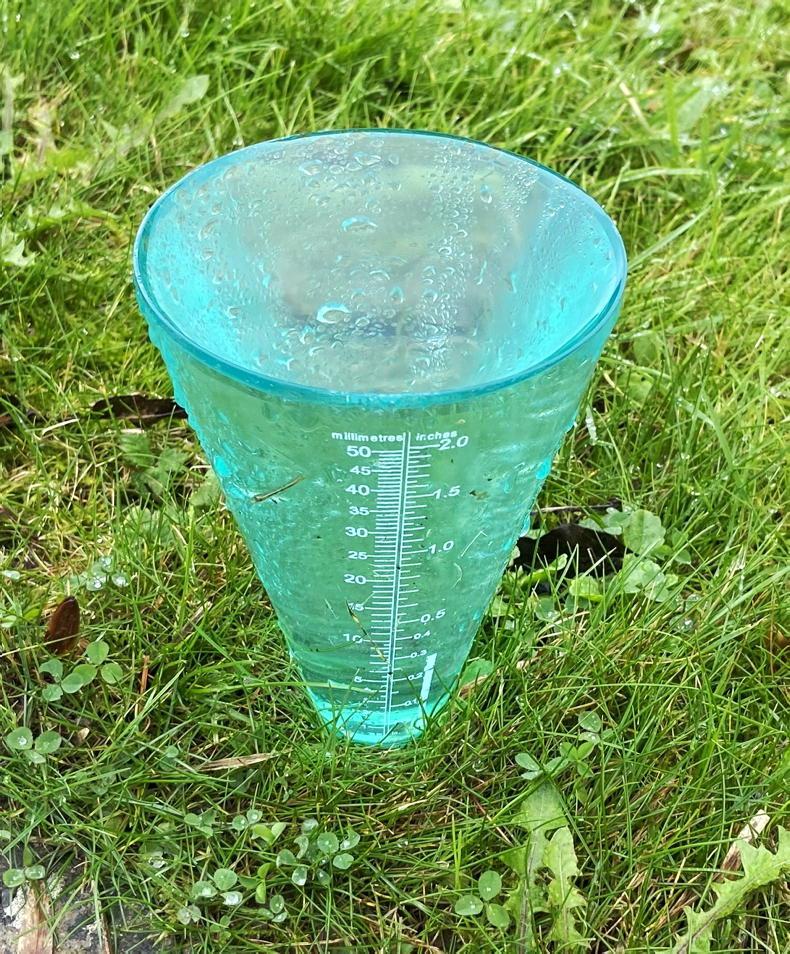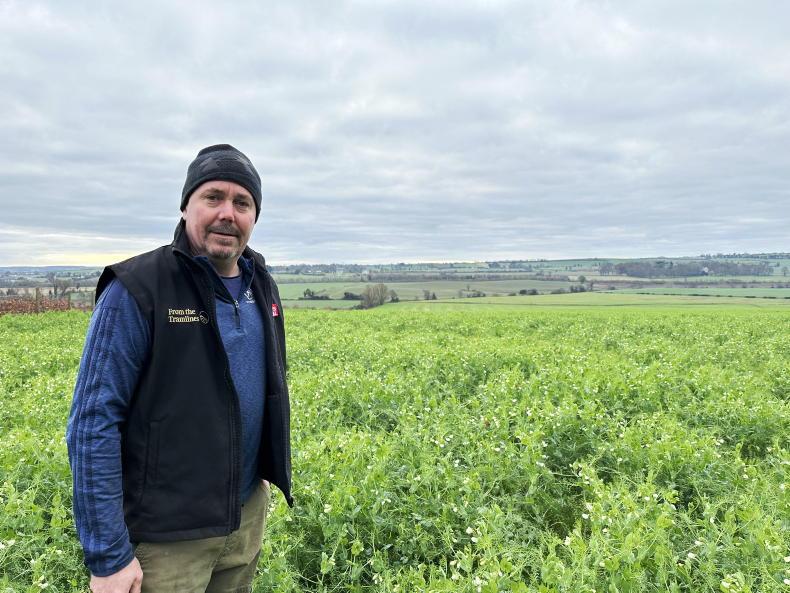Met Éireann’s Annual Climate Statement reports that Ireland’s average temperature in 2023 surpassed 11°C for the first time since record-keeping began. It also states that last year brought the wettest March on record, the wettest July on record and the warmest June on record, while extreme rainfall events caused severe flooding around the country.
While alarming, this weirder weather should not come as a complete surprise; it is in keeping with what we know about the effects of a warming planet.
Warmer world
These effects are not confined to droughts or heatwaves, but extend to a more general disruption and destabilisation of weather patterns worldwide.
According to the Intergovernmental Panel on Climate Change (IPCC), global warming crossed the 1°C threshold in 2017 and by 2021 was already affecting weather patterns in ‘every region across the globe’.
Consistent with Met Éireann’s predictions, in Ireland we can expect more ‘extreme weather events’, and ‘an increase in both dry periods and heavy rainfall’. In practical terms, an increase in dry periods and heavy rainfall translates as a greater risk of droughts and floods.
Worryingly, as global emissions continue to climb, we are now racing towards the global warming threshold of 1.5-2°C, risking increasingly severe disruption to our ‘normal’ weather patterns.
Farmers are acutely dependent on predictable weather patterns and as such are at the coal face of our changing climate, both in Ireland and around the world.
Impacts on Footprint Farms
At our annual Footprint Farmers gathering, hosted on Martin Crowe’s farm in Co Limerick in January, farmers were discussing the ongoing impacts of 2023’s weather patterns on their farms, as well as what changes in our weather patterns could mean for the future of farming.
Much like tillage farmers across the country, tillage farmers Padraig Connery in Co Waterford and Gareth Culligan in Co Louth had an exceptionally challenging year.
For example, over 18 and 19 October, Padraig reported that storm Babet brought 130mm of rain in just 36 hours. This deluge destroyed a quarter of his newly sown field of winter barley, submerged his recently reseeded red clover swards and carried away substantial stretches of his farm roadways.
Finding solutions
While there is no easy solution to climate change, Padraig and Gareth are committed to putting into action a blend of strategies for both climate mitigation (reducing emissions) and climate adaptation (enhancing resilience to more severe weather) on their farms throughout 2024 (see top tips).
Luckily, many on-farm actions tick both of these boxes at once.
For example, promoting soil health can both reduce the impacts of droughts and floods (adaptation) and help to capture more carbon and reduce reliance on chemical N (mitigation).
Ultimately, the lived experience of more extreme weather events in Ireland over the coming years could change farming practices far faster than any scheme, payment or regulation.
This phenomenon is already occurring in countries at the front line of climate change around the world.
Top tips: reducing emissions and building resilience and profitability on tillage farmsTeagasc reports that chemical nitrogen (N) inputs account for approximately 80% of greenhouse gas (GHG) emissions from the tillage sector.
Tips for reducing reliance on chemical N on tillage farms include:
Maintain soil health, balance soil fertility and maintain optimum pH (6.5 or above). Increase N efficiency by choosing protected urea, splitting applications and by applying at correct rates and during suitable weather conditions.Grow diverse cover/catch crops and nitrogen fixing legumes, such as beans and peas.Replace a portion of chemical N, P and K with organic fertiliser.Build soil structure, store carbon and lower P and K requirements by incorporating chopped straw.Consider min or reduced till.Maintain tall, wide and dens
Padraig Connery's overflowing rain gauge: he experienced 130mm of rainfall in 36hrs during storm Babet in October
Farm facts
Name: Padraig Connery.
Farm type: Arable and beef.
Farm size: 408ac.
Focus: Building soil health, reducing chemical N and boosting biodiversity.
Schemes: ACRES; straw incorporation measure; protein payment scheme; tillage incentive scheme; red clover silage measure (2023); fodder support scheme (2023).

Tillage farmer Gareth Culligan, Co Louth, says 2023 was tough but that 2024 is a great opportunity to put it behind him and start again with a clean slate. Gareth is using diverse cover crops to reduce his reliance on chemical N and to boost soil health and resilience.
Farm facts
Name: Gareth Culligan.
Farm type: Arable.
Farm size: 600ac.
Focus: Building soil health and reducing inputs while maintaining profitability.
Schemes: ACRES; straw incorporation measure; protein payment scheme.
Met Éireann’s Annual Climate Statement reports that Ireland’s average temperature in 2023 surpassed 11°C for the first time since record-keeping began. It also states that last year brought the wettest March on record, the wettest July on record and the warmest June on record, while extreme rainfall events caused severe flooding around the country.
While alarming, this weirder weather should not come as a complete surprise; it is in keeping with what we know about the effects of a warming planet.
Warmer world
These effects are not confined to droughts or heatwaves, but extend to a more general disruption and destabilisation of weather patterns worldwide.
According to the Intergovernmental Panel on Climate Change (IPCC), global warming crossed the 1°C threshold in 2017 and by 2021 was already affecting weather patterns in ‘every region across the globe’.
Consistent with Met Éireann’s predictions, in Ireland we can expect more ‘extreme weather events’, and ‘an increase in both dry periods and heavy rainfall’. In practical terms, an increase in dry periods and heavy rainfall translates as a greater risk of droughts and floods.
Worryingly, as global emissions continue to climb, we are now racing towards the global warming threshold of 1.5-2°C, risking increasingly severe disruption to our ‘normal’ weather patterns.
Farmers are acutely dependent on predictable weather patterns and as such are at the coal face of our changing climate, both in Ireland and around the world.
Impacts on Footprint Farms
At our annual Footprint Farmers gathering, hosted on Martin Crowe’s farm in Co Limerick in January, farmers were discussing the ongoing impacts of 2023’s weather patterns on their farms, as well as what changes in our weather patterns could mean for the future of farming.
Much like tillage farmers across the country, tillage farmers Padraig Connery in Co Waterford and Gareth Culligan in Co Louth had an exceptionally challenging year.
For example, over 18 and 19 October, Padraig reported that storm Babet brought 130mm of rain in just 36 hours. This deluge destroyed a quarter of his newly sown field of winter barley, submerged his recently reseeded red clover swards and carried away substantial stretches of his farm roadways.
Finding solutions
While there is no easy solution to climate change, Padraig and Gareth are committed to putting into action a blend of strategies for both climate mitigation (reducing emissions) and climate adaptation (enhancing resilience to more severe weather) on their farms throughout 2024 (see top tips).
Luckily, many on-farm actions tick both of these boxes at once.
For example, promoting soil health can both reduce the impacts of droughts and floods (adaptation) and help to capture more carbon and reduce reliance on chemical N (mitigation).
Ultimately, the lived experience of more extreme weather events in Ireland over the coming years could change farming practices far faster than any scheme, payment or regulation.
This phenomenon is already occurring in countries at the front line of climate change around the world.
Top tips: reducing emissions and building resilience and profitability on tillage farmsTeagasc reports that chemical nitrogen (N) inputs account for approximately 80% of greenhouse gas (GHG) emissions from the tillage sector.
Tips for reducing reliance on chemical N on tillage farms include:
Maintain soil health, balance soil fertility and maintain optimum pH (6.5 or above). Increase N efficiency by choosing protected urea, splitting applications and by applying at correct rates and during suitable weather conditions.Grow diverse cover/catch crops and nitrogen fixing legumes, such as beans and peas.Replace a portion of chemical N, P and K with organic fertiliser.Build soil structure, store carbon and lower P and K requirements by incorporating chopped straw.Consider min or reduced till.Maintain tall, wide and dens
Padraig Connery's overflowing rain gauge: he experienced 130mm of rainfall in 36hrs during storm Babet in October
Farm facts
Name: Padraig Connery.
Farm type: Arable and beef.
Farm size: 408ac.
Focus: Building soil health, reducing chemical N and boosting biodiversity.
Schemes: ACRES; straw incorporation measure; protein payment scheme; tillage incentive scheme; red clover silage measure (2023); fodder support scheme (2023).

Tillage farmer Gareth Culligan, Co Louth, says 2023 was tough but that 2024 is a great opportunity to put it behind him and start again with a clean slate. Gareth is using diverse cover crops to reduce his reliance on chemical N and to boost soil health and resilience.
Farm facts
Name: Gareth Culligan.
Farm type: Arable.
Farm size: 600ac.
Focus: Building soil health and reducing inputs while maintaining profitability.
Schemes: ACRES; straw incorporation measure; protein payment scheme.









 This is a subscriber-only article
This is a subscriber-only article









SHARING OPTIONS: